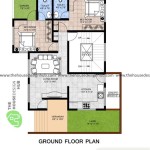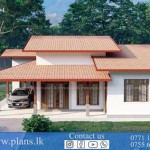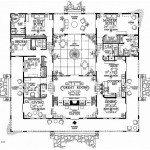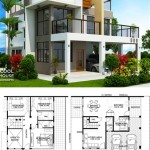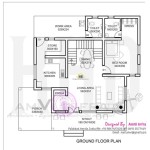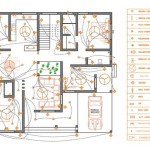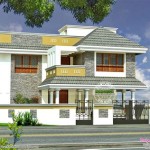Small Coastal House Plans On Pilings
Coastal living often evokes images of breezy verandas, stunning ocean views, and a relaxed lifestyle. For those seeking to minimize their environmental impact and adapt to changing sea levels, building a small house on pilings offers a practical and aesthetically pleasing solution. This article explores the benefits, considerations, and design elements involved in planning a small coastal house elevated on pilings.
Benefits of Pilings
Elevating a coastal home on pilings offers several significant advantages:
- Flood Protection: Pilings raise the living space above potential flood levels, protecting the structure and belongings from storm surges and rising tides.
- Preservation of Natural Landscape: Minimizing ground-level construction reduces disruption to the natural dune system and vegetation, contributing to shoreline stability.
- Improved Views: Elevated homes often enjoy panoramic ocean vistas and improved ventilation due to increased airflow beneath the structure.
- Reduced Environmental Impact: Smaller footprints and elevated construction can minimize the impact on sensitive coastal ecosystems.
Key Considerations for Coastal House Plans on Pilings
Careful planning is essential for successful coastal construction. Key factors to consider include:
- Local Building Codes and Regulations: Coastal areas often have specific building codes related to wind loads, flood zones, and environmental protection. Consulting local authorities is crucial.
- Site Assessment: A thorough site assessment should be conducted to evaluate soil conditions, topography, and potential hazards, such as erosion and storm surge.
- Piling Type and Material: Selecting the appropriate piling type (timber, concrete, steel) and ensuring proper installation is vital for structural integrity and longevity.
Design Elements for Small Coastal Houses
Maximizing space and functionality is paramount in small house design. Consider these design elements:
- Open Floor Plans: Creating an open flow between living spaces maximizes the sense of spaciousness and promotes natural light and ventilation.
- Multi-Functional Spaces: Incorporating furniture and design elements that serve multiple purposes can optimize space utilization in smaller homes.
- Large Windows and Doors: Maximize natural light and stunning coastal views with strategically placed windows and doors.
Material Selection for Coastal Environments
Choosing durable and weather-resistant materials is critical for coastal homes:
- Exterior Siding: Opt for materials like fiber cement, cedar, or treated lumber that can withstand harsh coastal conditions, including salt spray and humidity.
- Roofing: Metal roofing offers excellent durability and wind resistance, while impact-resistant shingles provide protection against debris during storms.
- Decking and Railings: Composite decking and corrosion-resistant railings require minimal maintenance and offer long-lasting performance in coastal environments.
Utilizing Vertical Space
In smaller homes, maximizing vertical space can significantly increase usable square footage:
- Lofted Bedrooms or Storage: Incorporating lofts can create additional sleeping areas or storage space without expanding the footprint of the house.
- High Ceilings: High ceilings create a sense of spaciousness and allow for the installation of ceiling fans for improved ventilation.
- Built-in Shelving and Storage: Maximize storage capacity with built-in shelving, cabinets, and under-stair storage solutions.
Outdoor Living Spaces
Coastal living often revolves around outdoor spaces. Consider these options:
- Wraparound Decks or Porches: Expand living space and provide ample room for outdoor dining, relaxation, and enjoying coastal breezes.
- Under-House Storage and Parking: The space beneath the elevated structure can be utilized for covered parking, storage for water toys, or a workshop area.
- Outdoor Showers and Foot-Washing Stations: Conveniently rinse off sand and saltwater after a day at the beach.
Sustainable Design Practices for Coastal Homes
Incorporating sustainable design principles minimizes environmental impact and improves energy efficiency:
- Solar Panels: Utilize renewable energy by installing solar panels on the roof to reduce reliance on traditional power sources.
- Rainwater Harvesting: Collect rainwater for irrigation and other non-potable uses, conserving water resources.
- Energy-Efficient Windows and Insulation: Minimize energy consumption by using high-performance windows and insulation to regulate indoor temperatures.
Maintenance and Inspection
Regular maintenance is essential for the longevity of coastal homes on pilings:
- Piling Inspection: Periodically inspect pilings for signs of damage, corrosion, or insect infestation.
- Deck and Railing Maintenance: Regularly clean and seal decks and railings to protect them from weathering and prolong their lifespan.
- Roof and Siding Inspections: Inspect the roof and siding for damage and address any repairs promptly to prevent further issues.

Home Plan 003 127 Great House Design

House Design Plan Ch539 3 Stilt Plans On Stilts Carriage

Elevated Piling And Stilt House Plans Coastal From Home

Plan 44026td Classic Florida Er Beach House Plans Coastal

Beach House Plans Coastal Home On Stilts

Elevated Piling And Stilt House Plans Coastal From Home

Home Plan Ch464

Elevated Piling And Stilt House Plans Coastal Home Beach On Stilts Cottage Decor

Family S 576 Sq Ft Stilt Beach House

Beach House Plans Coastal Home The Plan

